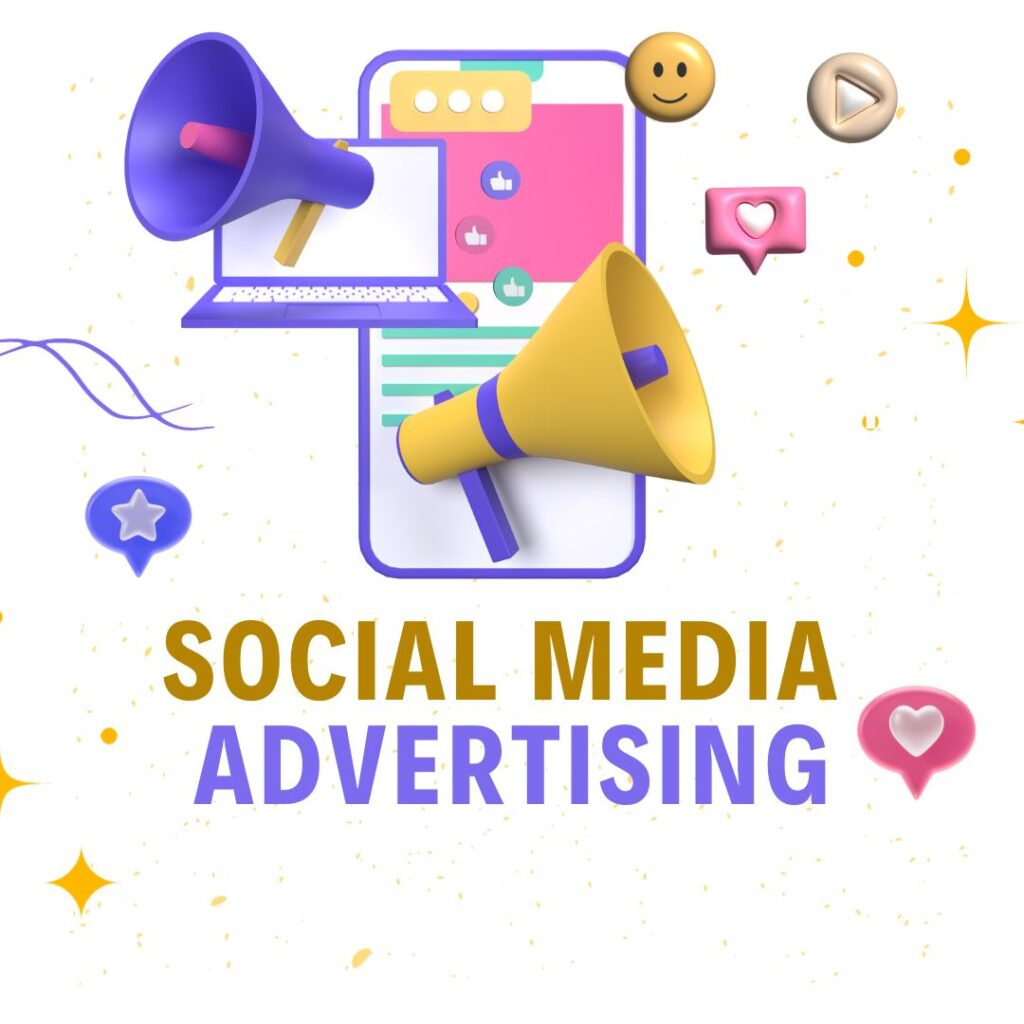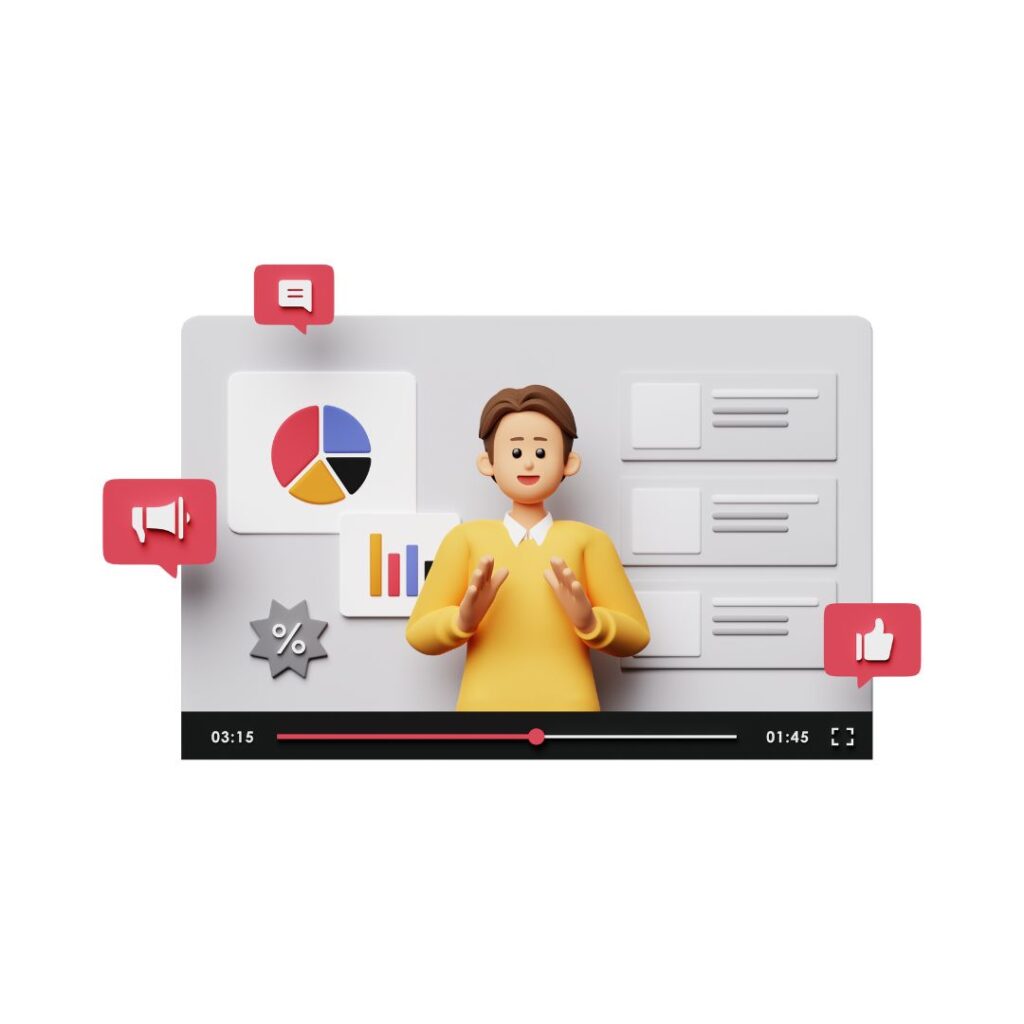In the ever-evolving landscape of marketing, understanding the diverse types of advertising is essential for businesses striving to effectively connect with their target audience. Harnessing the right advertising methods not only enhances brand visibility but also ensures that your message resonates with the right people. In this blog, we’ll explore seven powerful types of advertising, providing insights into how each can be leveraged to maximize audience reach.
Types of Advertising to Help You Reach Your Audience
Different types of advertising are instrumental in reaching diverse audiences and maximizing brand visibility. Social media advertising leverages platforms like Facebook and Instagram to target specific demographics, fostering engagement through interactive content. Search engine advertising, such as Pay-Per-Click campaigns, ensures visibility at the very moment users actively seek related information. Content marketing, including native advertising, seamlessly integrates promotional content with valuable information, enhancing brand credibility. Influencer marketing utilizes trusted individuals to authentically connect with dedicated follower bases. Email marketing provides a direct and personalized channel for tailored communication. Outdoor advertising maximizes visibility in high-traffic locations, creating a tangible brand presence. Video marketing engages audiences through visual storytelling, enhancing shareability. This strategic blend of advertising types forms a comprehensive approach, ensuring businesses effectively reach their audience across various platforms and channels.
1. Social Media Advertising:
Social media advertising has emerged as a cornerstone in the digital marketing landscape, offering businesses unparalleled opportunities to connect with their target audience in a personalized and engaging manner. Platforms such as Facebook, Instagram, Twitter, and LinkedIn have become dynamic arenas for advertisers to showcase their products and services.

Key Features:
- Precision Targeting: Social media platforms allow advertisers to define their audience with exceptional precision. Demographic information, interests, online behavior, and even location can be used to tailor advertisements to specific user segments.
- Diverse Ad Formats: From image and video ads to carousel and story ads, social media marketing offer a plethora of formats to convey messages creatively. This variety enables advertisers to experiment with different content types and engage users effectively.
- Engagement and Interaction: Unlike traditional advertising, social media ads encourage interaction. Users can like, comment, share, and even make direct purchases, fostering a sense of community around the brand.
- Analytics and Insights: Robust analytics tools provided by social media platforms allow advertisers to track the performance of their campaigns in real-time. This data-driven approach enables quick adjustments to optimize targeting and content.
Strategic Applications:
- Brand Awareness: Social media advertising is a powerful tool for building and enhancing brand awareness. Engaging content and strategic targeting ensure that the brand message reaches the right audience, leaving a lasting impression.
- Lead Generation: Many social platforms offer lead generation tools, allowing businesses to collect valuable information from interested users. This facilitates the creation of targeted marketing lists and personalized follow-up campaigns.
Learn new tips on social media marketing with the material of the following link 7 Social Media Marketing Tips to Drive Massive Traffic
2. Search Engine Advertising (SEM/PPC):
Search Engine Advertising (SEA), often referred to as Search Engine Marketing (SEM) or Pay-Per-Click (PPC) advertising, is a powerful digital marketing strategy designed to enhance a brand’s visibility on search engine results pages. This form of advertising allows businesses to bid on specific keywords related to their products or services, ensuring that their ads appear prominently when users search for those terms.

Key Features:
1. Keyword Targeting:
Strategic Bidding: Advertisers bid on relevant keywords that align with their business objectives. The bid amount, along with factors like ad relevance and landing page quality, determines the ad’s placement.
2. Ad Formats:
Text Ads: Traditional text-based ads appear at the top and bottom of search engine results pages. They consist of a headline, description, and a link to the landing page.
Display Ads: Visual ads, including images and videos, can be displayed on partner websites within the search engine’s network.
3. Ad Auctions:
Real-Time Bidding: Search engines conduct real-time auctions when a user initiates a search. The winner of the auction has their ad displayed in the prime ad space.
4. Budget Control:
Cost-Per-Click (CPC): Advertisers pay a fee only when users click on their ads, providing a cost-effective model. Budgets can be set daily or over a specific campaign period.
Learn new tips & tricks on Search Engine Marketing with the material of the following link
Strategic Applications:
- Immediate Visibility: SEA ensures that businesses gain instant visibility on search engine results pages, making it ideal for time-sensitive promotions or product launches.
- Highly Targeted: Advertisers can fine-tune their target audience based on specific keywords, demographics, and geographic locations, maximizing relevance.
- Measurable Results: Comprehensive analytics tools provide detailed insights into the performance of ad campaigns, allowing for real-time adjustments to optimize results.
- Increased Conversions: The intent-driven nature of search engine users often leads to higher conversion rates, making SEA an effective strategy for driving sales and leads.
3. Content Marketing and Native Advertising:
Content marketing
Content marketing is a strategic approach focused on creating and distributing valuable, relevant, and consistent content to attract and engage a target audience. This method aims to build brand awareness, establish authority, and nurture long-term relationships.

Key Features:
- Quality Content Creation: Content marketing involves the creation of high-quality, informative, and entertaining content such as blog posts, articles, videos, infographics, and more.
- Audience-Centric Approach: Content is tailored to address the specific needs, interests, and pain points of the target audience, fostering a deeper connection.
- Brand Storytelling: Brands use storytelling to convey their values, mission, and personality, creating a narrative that resonates with the audience on an emotional level.
- SEO Optimization: Content is often optimized for search engines, enhancing the brand’s online visibility and attracting organic traffic.
Native advertising
Native advertising is a form of paid advertising that matches the form and function of the platform on which it appears. It seamlessly blends into the user experience, providing a non-disruptive and cohesive feel.
Key Features:
- Integration with Platform: Native ads are designed to match the visual and functional elements of the platform, making them appear as natural content rather than traditional advertisements.
- Contextual Relevance: These ads are contextually relevant to the platform and the user’s experience, ensuring they do not disrupt the flow of content.
Strategic Applications:
- Seamless Integration: Content marketing and native advertising often work hand in hand. Native ads can amplify content marketing efforts by promoting valuable content to a broader audience in a way that feels natural.
- Extended Reach: Native advertising can introduce the target audience to the brand’s content, leading them to explore more through the content marketing channels.
4. Influencer Marketing:
Influencer marketing is a strategic collaboration between brands and individuals with a significant and engaged following, known as influencers. The goal is to leverage the influencers’ credibility and reach to promote products, services, or messages authentically.

Key Features:
- Influencer Selection: Identifying influencers whose values, niche, and audience align with the brand’s target demographic is crucial. This ensures authenticity and relevance in the collaboration.
- Authentic Endorsements: Influencers provide authentic endorsements based on their experiences with a product or service, creating a genuine connection with their audience.
Strategic Applications:
- Brand Awareness: Influencers introduce a brand to their audience, leveraging their credibility to enhance brand visibility and awareness.
- Product Endorsements: Influencers authentically showcase products, providing reviews and demonstrations that resonate with their followers.
5. Email Marketing:
Email marketing is a strategic digital marketing approach that involves sending targeted and personalized emails to a specific audience. This method aims to build and nurture relationships with customers, promote products or services, and drive engagement and conversions.

Key Features:
- List Building:
- Building and maintaining a high-quality email list is foundational. This involves obtaining permission from individuals to receive communications from the brand.
- Segmentation:
- Dividing the email list into segments based on factors such as demographics, behavior, or purchase history allows for the creation of highly targeted and relevant campaigns.
Strategic Applications:
- Newsletters:
- Regular newsletters provide subscribers with updates, industry insights, and valuable content, fostering brand loyalty.
- Promotional Campaigns:
- Email marketing is effective for promoting products, services, or special offers to drive sales and conversions.
6. Outdoor Advertising:
Outdoor advertising involves the strategic placement of promotional messages and visuals in high-traffic, public spaces to reach a broad audience. This form of advertising leverages physical locations such as billboards, transit vehicles, posters, and other outdoor structures to create brand visibility.

Key Features:
- Billboards: Large, strategically placed billboards showcase visually striking designs and messages, capturing the attention of passersby.
- Transit Advertising: Placing ads on buses, trains, taxis, and other modes of transportation extends brand visibility to audiences on the move.
Strategic Applications:
- Brand Awareness: Outdoor advertising is a powerful tool for building brand awareness, as the large, visually impactful displays capture the attention of a wide audience.
- Local Targeting: Placing ads in specific geographic locations allows businesses to target local audiences effectively.
- Event Promotion: Outdoor advertising is instrumental in promoting events, concerts, product launches, and other time-sensitive activities.
- Continuous Exposure: Unlike some forms of digital advertising, outdoor ads provide continuous exposure, making them especially effective for long-term brand visibility.
7. Video Marketing:
Video marketing leverages the popularity of video content on platforms like YouTube and social media to convey messages visually. Video marketing includes promotional videos, tutorials, product demos, and more. The dynamic and engaging nature of videos makes them highly shareable, extending reach organically. Live videos and interactive elements further enhance audience engagement, contributing to a memorable brand experience.

Key Features:
- Content Variety: Video marketing encompasses a diverse range of content, including brand videos, product demos, tutorials, testimonials, interviews, and storytelling.
- Platforms: Videos are shared on platforms such as YouTube, social media (Facebook, Instagram, Twitter, LinkedIn), websites, and video-centric apps like TikTok.
- Engagement Strategies: Interactive elements, such as clickable links, polls, and comments, enhance user engagement, turning viewers into active participants.
- Optimization: Video content is often optimized for search engines, ensuring visibility and discoverability through platforms like YouTube and Google.
Strategic Applications:
- Brand Storytelling:
- Video marketing allows brands to tell their stories visually, creating emotional connections with audiences and conveying brand personality.
- Product Showcasing:
- Demonstrating products or services through video provides a more immersive and detailed experience for potential customers.
In conclusion, each type of advertising plays a unique role in reaching and engaging audiences. The effectiveness of these methods depends on factors like target audience demographics, campaign objectives, and the nature of the product or service. A well-rounded advertising strategy often involves a combination of these powerful types to maximize reach and impact.

